
The SEVEN WONDERS OF THE WORLD.
In the ancient world there were seven great man-made
structures for travelers to see on a world tour. Lists of the so-called seven
wonders of the world sometimes varied. The following list, dating from about the
6th century AD, was a commonly used and standard one:
(1) the pyramids of Egypt
(2) the Hanging Gardens of Babylon
(3) the Mausoleum at Halicarnassus
(4) the statue of Zeus at Olympia
(5) the temple of Artemis (Diana) at Ephesus
(6) the Colossus of Rhodes
(7) the Pharos (lighthouse) of Alexandria.
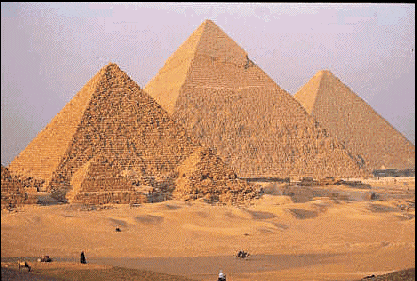
Of the seven wonders of the ancient world, only the pyramids of Egypt have
survived in a form that resembles their original condition. The largest of the three,
known as the Great Pyramid of Khufu, was made of approximately 2.3 million blocks of
stone each weighing an average of 2.5 tons. Located in Giza on the west bank of the
Nile River, near Cairo, the pyramids remain one of the engineering marvels of all time.
-- Hugh Sitton Tony Stone Worldwide
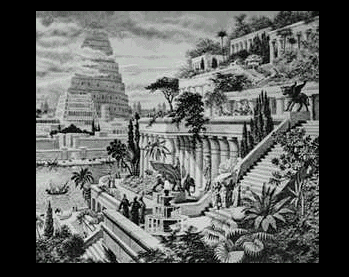
According to tradition, the homesickness of a favorite wife prompted
Nebuchadnezzar, king of Babylon, to build the famous Hanging Gardens.
Nothing remains of these luxuriant terraces.
-- Brown Brothers

Only crumbling fragments remain of the Mausoleum at Halicarnassus on the coast
of Asia Minor. It was raised to the memory of King Mausolus of Caria by his
devoted queen, Artemisia.
-- Brown Brothers
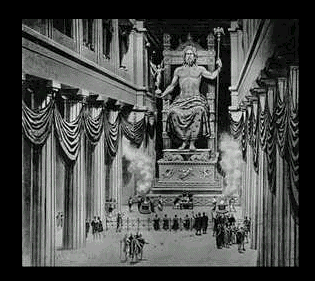
The ivory and gold statue of the Olympian Zeus was perhaps the greatest
masterpiece of the sculptor Phidias. It stood in a shrine on the Olympian
plain until the early Middle Ages.
-- Brown Brothers
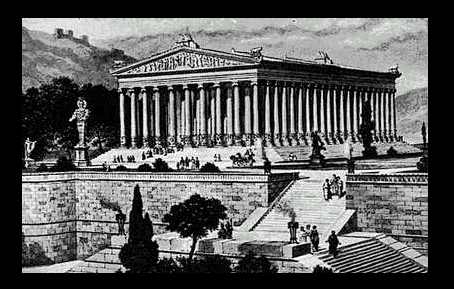
Very little of the temple of Artemis (Diana) at Ephesus remains today. The
drawing shows the huge temple as it probably looked in the 4th century BC.
-- Brown Brothers
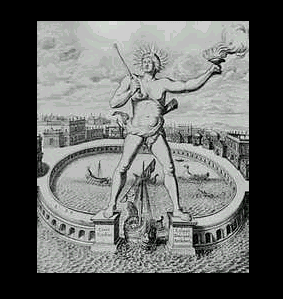
The old engraving of the Colossus of Rhodes is purely imaginary and is based on
the legend that the statue stood astride the harbor entrance.
-- The Bettmann Archive

For more than 1,000 years the lighthouse known as Pharos of Alexandria guided
Mediterranean ships to harbor. Built for Ptolemy II of Egypt in about 280 BC,
the lighthouse was severely damaged by an earthquake in AD 955 and disappeared
completely by 1500.
-- Brown Brothers
Modern Wonders
To ancient and medieval people the number seven had a mystical significance.
Accordingly they were much given to compiling lists involving this number
the seven wonders, the seven champions of Christendom, the seven seas, and
so on. Some of this significance still clings to the number seven, and people
continue the harmless pastime of compiling lists of the seven wonders of the
world.
The wonders of the modern world lie not so much in architecture and sculpture
as they do in technology. A list of seven modern wonders compiled after World
War I included:
(1) radio
(2) the telephone
(3) the airplane
(4) radium
(5) anesthetics and antitoxins
(6) spectrum analysis
(7) X rays.
The list seems deficient. It fails to include the automobile, which
revolutionized ways of living in the United States, and the techniques of
mass production, which made modern industry possible. A list today would
undoubtedly include television, atomic energy, and artificial satellites
as modern wonders.
Related Links :
Bulfinch's Mythology, - The Age of Fable or Stories of Gods and Heroes. -
Translating English letters to Hieroglyphic language(Egypt's TourismNet).








